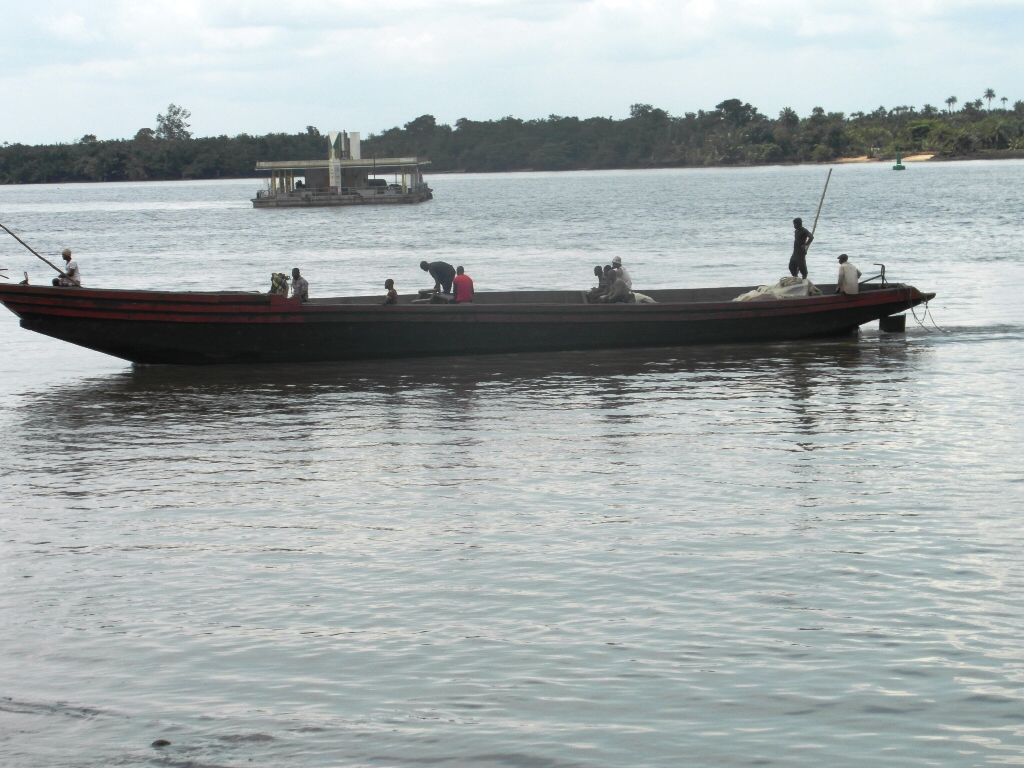“Remember! You promised she would not be harmed,” the collaborator/lover pleads as his beloved is forcibly shackled and dragged off.
Gin is not new to him, but the bottle is. So, too, are mirrors. But they don’t feature in the slave raid on his village. No collaboration or betrayal-just a bevy of armed white soldiers crashing a night celebration, guns blazing, swords flashing. They kill anyone who resists-and take away the village’s young and able in one fell swoop.
Their feet and wrists are shackled. A separate chain links their neck shackles. A long Indian file of dejected souls trudging in misery. Their wails echo through the forest, unanswered by the gods of Efik land.
Silhouetted against the setting sun, their faces are indistinguishable. The file of fresh slaves climb hills and descend slopes. Each misstep sends the entire pack of humans tumbling backward or pitching forward. It takes a bark, the crack of a whip, a stinging slap on a bare back here, an unprotected head there, to stop them.
Moored boats bob on the Calabar River, awaiting their fresh load of slaves, to take them aboard a mother ship anchored off the Bight of Bonny on the Atlantic.
Eagles soar, silhouetted against the gloomy sky. And the voice of Joke Silva intones of innocence lost in tragedy.
The entire tragedy of the British-Nigerian history drama is packed into an 18-minute video that opened my journey through the Slave History Museum in Calabar, for just N100.

My wife and I were the first visitors that morning. In touristy mood, we took two of nearly a hundred seats in front of a huge floor-to-ceiling screen and marvelled in stunned silence.
The voices, screams, jangles-from hifi speakers in the ceiling-transported us to back into the 16th century, right into the heart of the transatlantic slave trade.
Once the feature video ended, we were speechless and any trace of honeymoon excitement disappeared.
“See what humans do to one another,” my wife lamented, her eyes welling up with tears. “Did we really do all that?”
Before I could answer, the tour guide was upon us. A soft spoken, lanky man, he draws the task of taking visitors through the painful visual history of man’s inhumanity to man.
We followed him to the main doors, and he issued the museum’s warning. Photos of any exhibit are not allowed. No recording device is permitted. You cannot pull out your mobile phone or camera of any kind, he explained. No reproduction of anything beyond those doors is encouraged.
Welcome to hell, he might have said. And heart-rending hell it was, from the first exhibit.
In a slave ship’s cargo hold are dozens of bodies arranged head against feet. The devious logic is to maximise space, the guide explains. Food is sprinkled in between the bodies, and the slaves must turn their heads to pick up scraps of food with their mouths, he adds.
The fact that the bodies are effigies escapes me. The skin tones, hair pigment, bone features are so real. My new bride shivers, appalled. Three new couples join us inside the exhibition room, equally appalled.

The lives of the slaves appals even more. In such tight confinement, they are bound to be taken ill. The raiders have a solution ready: the dead are thrown overboard, the sick who make it to their destination have their worth reduced. The raiders already have stowed spices and oils pillaged from Calabar onboard; the goods are sold to compensate their loss on sick slaves.
The barter system for slave immortalised itself in the memory of Efik land. Today, there aren’t barters for slaves, but a barter market still stands as memory of a dark past.
Coastal areas around the Bight of Bonny and Bight of Biafra were the most lucrative for slave raids. In the history of the slave trade, more than 2.65 million would be transported-many killed, many never heard of-across the Atlantic to plantations in the Americas and Europe.
To get to the plantation, they had to go through auction. The stands are elaborately depicted: moustached men with pipes, and gloved women with parasols stand in haphazard circles, their eye intent and scrutinising. In their middle stands a dark-skinned man, women, child-it doesn’t matter-hands shackled behind, head bowed in hopelessness.
Their tears are still fresh from wailing in their holding cells. I heard their wails in Efik carry through more than 200 years. I shiver, but the men and women surrounding them like hawks don’t flinch.
The auction master talks up the hardiness of his latest find the way he would about a rare breed work cattle.
Guaranteed to do anything, pick cotton, harvest sugar, the best find for any plantation and just about any work, says the voice in a deep, nasal drawl that’s become synonymous with the American south. The voices through speakers accompany the paintings and castings, guaranteed to recreate the ambience of a slave auction, and put you right in the middle of the sale.
“Seven pounds,” shouts a woman’s voice shrilly.
“Ten pounds,” counters a man’s voice. And the deal is done.

The exhibits follow them through ages of back-breaking, finger-bruising work. The endless days of toiling, and long nights of lamentation. The whipping of the slave who dared disobey. One painting depicts the famous “hanging man”, his body painfully contorted by ropes to serve as deterrent to other slaves.
The gruelling work lasts some 200 years before the whispers of abolitionists become a deafening drumroll that gradually usher the end of the slave trade.
Names as Oluadah Equaino, Samuel Ajayi Crowther begin to pop up. The artworks from across several tribes in what’s now Nigeria replace the selection of torture instruments on display in room after room.
The paintings become less haunting, more hopeful. Weak smiles beam on the faces, limbs become firmer, and arms gradually lift in joy. I find my relief too-freedom from the weight of guilt of ages past pressing down on me.
It ruined my honeymoon, but the experience-going back in time-was worth it.

 Join Daily Trust WhatsApp Community For Quick Access To News and Happenings Around You.
Join Daily Trust WhatsApp Community For Quick Access To News and Happenings Around You.


